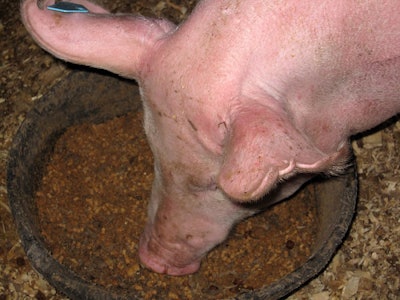
You may have heard about African swine fever (ASF) and, to this point, perhaps considered it an indirect threat to the pet food industry and your business. When the disease first appeared in China in 2018, it decimated the hog herd there, affecting supplies and prices of all protein sources worldwide because of the Chinese market’s size and impact. As with many other cases involving animal proteins, that likely trickled down to protein supplies for pet food.
Since then, ASF has spread throughout the world, including other countries in Asia as well as in Europe. In 2021, it reached the Americas with cases reported in the Dominican Republic. There are still no treatment or prevention methods for the disease, which is highly mobile and transmissible.
To date, ASF has yet to enter the U.S., but many experts consider it a case of when, not if, that will happen, especially after the Dominican Republican outbreak. Indeed, government agencies, academia and other organizations have been preparing for that eventuality for several years, focusing mainly on the feed and pork industries.
But now some organizations and experts, led by the American Feed Industry Association (AFIA), are sounding the alarm about the serious and deleterious impacts the arrival of ASF could wreak on the U.S. pet food industry. Could this be the U.S. pet food market’s next DCM-like crisis?
DCM on FDA’s back burner, but new research continues
Of course, DCM—rather, the Food and Drug Administration’s (FDA) investigation into novel cases of canine dilated cardiomyopathy and a possible (never proven) link to grain-free pet food—sort of snuck up on the industry. ASF at least has been on the distant horizon.
Yet we could be dealing with it for years. On the other hand, while DCM hasn’t gone away and will continue to affect certain dogs, FDA’s investigation has definitely been back-burnered since the agency acknowledged in September 2020 that it was a “multifactorial, complex” condition with many possible causes. In fact, during a presentation at AFIA’s 2022 Pet Food Conference on January 25, Dave Edwards, Ph.D., director of the division of animal feeds for FDA’s Center for Veterinary Medicine, didn’t mention DCM even once.
That doesn’t mean others aren’t continuing to investigate and research the condition related to nutrition. During the same conference, Pawan Singh, a graduate student in the nutrition program of Anna Kate Shoveller, Ph.D., at the University of Guelph, presented results of a specific trial she conducted with Shoveller and others on the affects of pulses (often used in grain-free pet food formulations) on canine cardiac health.
In the study, dogs were fed diets with inclusion of pulses (green and yellow peas, pinto beans, chickpeas and lentils) at levels of 0% (the control), 15%, 30% and 45%. These experimental diets were not supplemented with the essential amino acids methionine, cystine, taurine or L-carnitine, but all had sufficient amounts of each, Singh said. After several weeks, the dogs, no matter which diet they had been fed, showed no changes in echocardiographic measurements from baseline nor other indications of DCM development.
Why pet food must prepare for ASF
While DCM may still threaten a small number of dogs, and pet food companies should continue to follow nutrition-related research on it, it doesn’t pose the same level of risk that ASF might. Why should you be concerned?
Because ASF is so transmissible—it can adhere to people’s clothing or shoes, the inside of trucks or containers, just about anything, and be easily carried to hogs—and there is no treatment or prevention, once it enters a country, the consequences can be immediate and significant. Not only are entire hog herds often culled, but ASF’s presence can shut down trade and movement of many ingredients, not just porcine ones, while the point(s) of entry and modes of transmission are investigated and mitigation put in place. That would affect ingredients used in pet food, too.
In addition to shutting down production and transportation of ingredients within the U.S., it could impact many exports of pet food and ingredients, said Gina Tumbarello, senior director of international policy and trade for AFIA, also presenting during the pet food conference. “Not only would ASF devastate the country’s pork industry, it would also affect exports of dog and cat food, feather meal, fishmeal, and meat and bone meal,” wrote Ann Reus, senior reporter for Feed Strategy, reporting on Tumbarello’s presentation. (Note: Feed Strategy is owned by Watt Global Media, as is Petfood Industry.)
That’s due to complications with paperwork required for exports of those materials. AFIA is trying to alert the U.S. government to this threat and get officials to work with trade partners to amend the documentation, but the association is also urging the pet food and animal feed industries to prepare for ASF possibly entering the country.
“I think more people need to know what’s happening, what the potential risk is,” Tumbarello said. “They need to understand the money that’s involved, the loss of business … how it could affect our economy, workers and employees. Talk to people, educate them. We’re going to do our part on our end as an association on behalf of the industry, but I think shedding some light on this side of ASF that people aren’t necessarily as familiar with is the first step.”
















